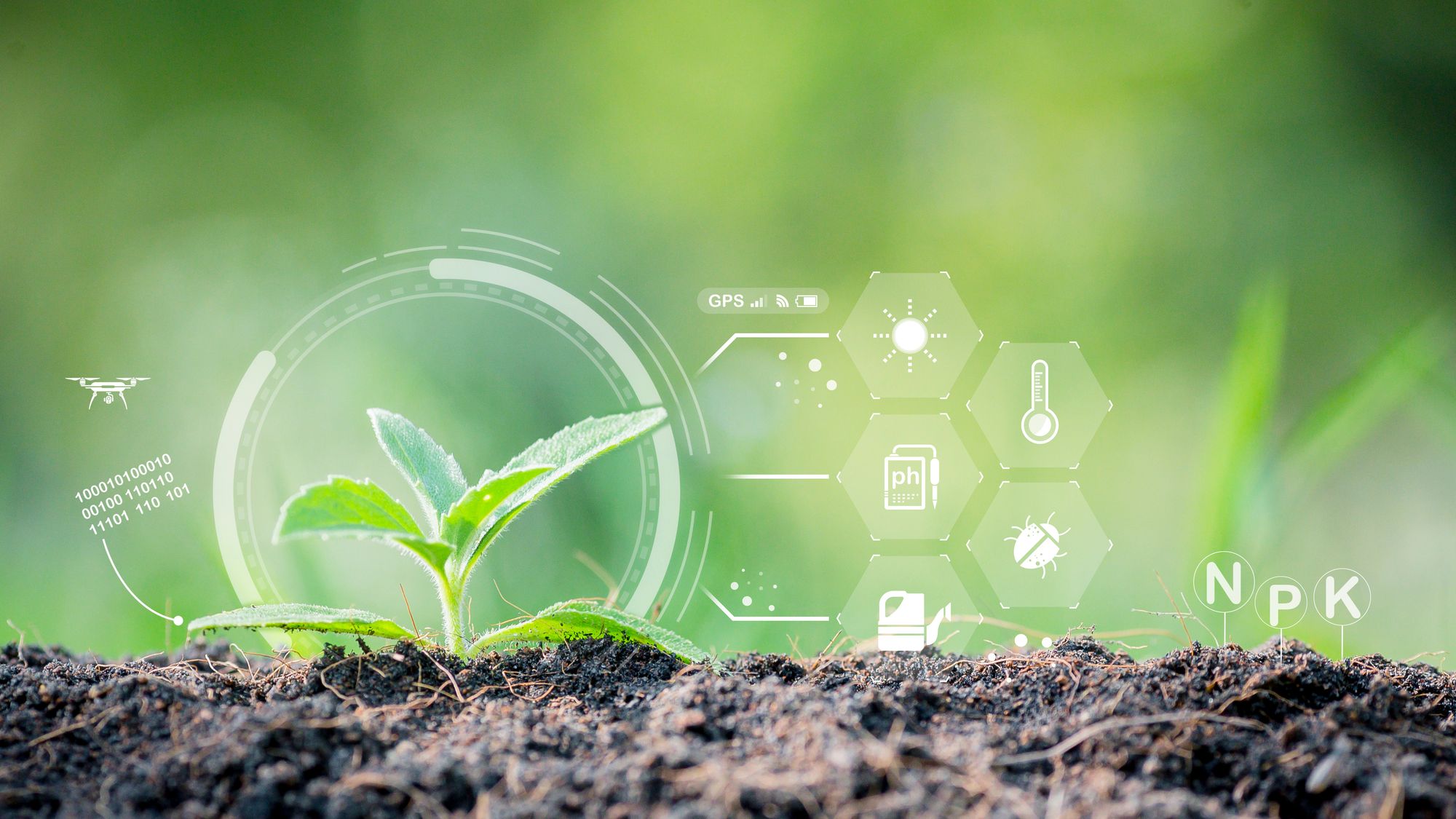Canada is bearing the punches of climate change. Coastal erosion, the melting of permafrost, increased heat waves, droughts, wildfires, flooding, changes to ecosystems, damages to infrastructure, and crop losses are the reality in regions across Canada and the world. The global scientific consensus is that human activities are causing unparalleled changes to the Earth's climate, presenting substantial risks to human health, safety, biodiversity, and economic progress. How we address this must be holistic and multi-faceted, and a growing area of attention is the use of machine learning (ML) for climate-related research and response.
The climate and the digital transitions are the two most powerful trends of our century. The way in which we manage them, and their increasing interaction, will play a big role in humanity’s future. We need to create pathways to harness the power of AI to preserve the environment in a way that does not endanger but actually upholds the best from our social and democratic values. – Nicolas Miailhe, Co-Lead of the GPAI Committee on Climate Action and Biodiversity Preservation; Founder and President, The Future Society
Canadian Climate Change Facts
- Canada has the 10th highest per capita emissions worldwide.
- Canada is warming at more than twice the global rate—and the Canadian Arctic is warming at approximately three times the global rate.
- Due to deforestation, Canadian forests have released more carbon than they’ve stored for the last two decades.
What is machine learning?
ML is a form of artificial intelligence (AI) focused on the development of algorithms and computer models that learn from experience, similar to how humans learn. Using predictive and statistical modelling, ML algorithms are trained to analyze historical data and identify patterns. These models are used to make predictions and identify critical information for decision-making. Learning in ML applications is automated, meaning they learn from the information they output to become increasingly accurate over time without being explicitly programmed.
ML can analyze a wide range of information, such as numbers, words, images, and clicks. This has allowed it to be applied successfully in many fields, ranging from finance to medicine and entertainment. More recently, experts have adapted ML algorithms in the fight against climate change.
Are you a public servant who wants to dive deeper into the world of machine learning? Take this course to get started: Getting Started with Machine Learning.
How can machine learning help foster climate resilience?

Climate resilience refers to the ability of individuals, communities, ecosystems and systems to withstand, recover, and adapt to the impacts of climate change. In other words, it involves effectively dealing with and mitigating the impacts of climate change while preventing those impacts from getting worse. The objective is to build an adaptive capacity and foster sustainable development practices that enhance resilience.
There are many ways that AI can be a powerful tool in enabling and accelerating climate action, from monitoring carbon stock using satellite imagery, to optimizing heating and cooling in buildings, forecasting crop yield, and helping design next-generation batteries. – David Rolnick, Co-founder and Chair, Climate Change AI; Assistant Professor and Canada CIFAR AI Chair, McGill University
Here are some key ways ML is being used in the climate context:
- Climate change prediction: ML algorithms can help develop more accurate climate models and improve weather forecasting. For example, a research project called DeepGlobe used deep learning to predict extreme weather events such as floods and landslides, enabling communities to prepare and respond more effectively to these events.
- Energy efficiency and optimization: ML algorithms can help optimize energy usage and reduce waste by predicting energy demand, identifying areas for efficiency improvements, and developing smarter grids. Google’s DeepMind Project developed a machine learning system to control the cooling systems in its data centres, which reduced energy consumption by up to 40%.
- Environmental monitoring and conservation: ML algorithms can help monitor and manage natural resources, such as forests, oceans, and wildlife populations. The Wildbook project, for example, uses computer vision and machine learning to identify individual animals in photos and videos, allowing researchers to track and monitor endangered species more effectively.
Machine learning models tend to perform well at modelling time series and more recently at anticipating tipping points that are often observed with extreme events. – Guillaume Durand, Ph.D., MBA, Data Scientist for Complex Systems at the National Research Council of Canada
Through private sector partnerships and self-led projects, the Government of Canada is also exploring the use of ML to adapt and mitigate the effects of climate change. For example:
- In 2021, Transport Canada piloted aircraft systems to monitor climate-related supply-chain risks. They worked with Spexi Geospatioal to develop and test machine vision algorithms that identify risks near rail corridors, such as landslides, water levels, and fires.
- Natural Resources Canada (NRCan) is leveraging ML to improve the accuracy of a tree-ring database designed to assess “individual tree, tree population and forest ecosystem vulnerabilities to drought stress [and] other changing forest disturbance regimes (e.g., insects, diseases, fire).”
- Within Atlantic Science Enterprise Centre (ASEC), the NRC contributes to the development of ML models to augment global understanding and predictability of aquatic ecosystems in the context of climate change.
- Also, within ASEC, the NRC has worked on ML models to help monitor the migration of North Atlantic right whales to more Nordic areas due to climate change effects on their food sources. They used machine vision techniques that help in the processing of aerial images (planes or satellites) to identify individuals and potentially limit human activities in their location.
Some [machine learning] applications I am working on consist in improving aquaculture resilience to extreme weather events by providing adequate technologies (sensors and software) for water quality change anticipation (eutrophication, bacterial contamination, etc.) and to help in the rehabilitation of nitrogen and nutrient loaded marine environment (precision farming). – Guillaume Durand, Ph.D., MBA, Data Scientist for Complex Systems at the National Research Council of Canada

However, there are still lots of opportunities. The Climate Change and AI: Recommendations for Government report, outlines recommendations for how governments can support the responsible use of AI to address climate challenges. Among them:
- Improve data ecosystems in sectors vital for climate transition, including the advancement of digital twins in the energy sector for instance.
- Increasing support for research, innovation, and deployment through targeted funding, infrastructure, and improved market design.
- Integrate climate change as a central pillar in AI strategies to shape the responsible development of AI.
- Foster more international collaboration and capacity building to facilitate the development and global governance of AI-for-climate solutions.
By leveraging the power of data and artificial intelligence, we can develop new solutions and strategies that foster climate resilience. However, there are some adverse impacts to consider.
The downfall
Although machine learning offers viable solutions to many problems in the climate space, we aren’t out of the woods yet. Critics argue that AI is energy-intensive and environmentally damaging, making it a costly distraction to more effective ways of dealing with the climate crisis.

A study by the University of Massachusetts Amherst revealed that storing and processing the data needed to train a large ML algorithm can release up to 626 thousand kilograms of carbon dioxide. That’s equivalent to five times the lifecycle emissions of an American car.
The precious metals needed to manufacture ML hardware such as the servers and chips needed for computing are also harmful to the environment, with impacts ranging from soil erosion and deforestation to water contamination and biodiversity loss. In addition, the fabrication, transportation and maintenance of ML hardware involve high levels of energy consumption.
That said, there are ways to mitigate these adverse effects, at least to some extent. The aforementioned Climate Change and AI: Recommendations for Government report lists a few:
- Avoid direct governmental funding of AI applications that run counter to climate goals (for example, accelerating fossil fuel extraction and development).
- Make climate change a central consideration when fostering the development of AI-enabled technologies.
- Ensure that cloud computing is appropriately included in reporting and carbon pricing policies.
- Procure AI and computing services only from companies that have signed up to a net zero target covering points 1, 2 and 3.
But ultimately, there isn’t enough data on the lifecycle impacts of AI use cases. The AI sector is evolving quickly and its impacts on the environment are narrowly defined, with research mostly focusing on computational impacts compared to others. This creates a real challenge when it comes to developing policies around the assessment, facilitation, and regulation of AI technologies, such as ML.
Why do you need to know about this?
There are many private and public sector initiatives that aim to reduce greenhouse gas emissions. For example, in 2017, the Government of Canada implemented the Greening Government Strategy, which aspires to reduce greenhouse gas emissions from government operations to net zero by 2050. However, reducing emissions is only part of the solution.
Climate change is a stark reality with global ramifications. We need to consider many possible tools in the toolkit. However, overall, a collective effort from individuals, communities, businesses, and governments worldwide is required to ensure a sustainable future for our planet.

